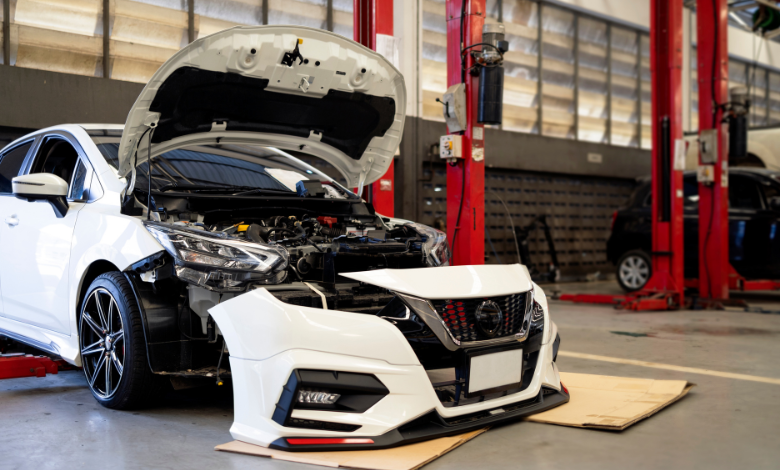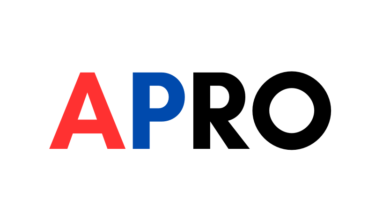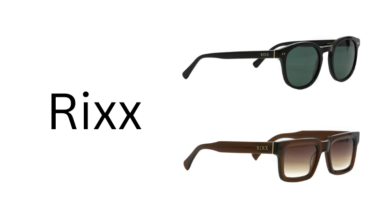G&C Auto Body: Your Full Guide to Services, Locations, Reviews & How to Pick the Right Shop

If you just had an accident, or your car got dinged, you’re probably stressed. Repair shops, insurance, estimates—it gets confusing fast. That’s where G&C Auto Body can enter the picture. My goal here is to walk you through everything you might want to know: what G&C does, how good they are, how pricing works, and what to watch out for. Think of it as a guide to help you decide if G&C is the right body shop for your car.
I’ve read through many reviews, their company info, and customer stories to mix in real insight. I’ll also throw in tips I’ve learned (from friends, from dealing with shops myself). Let’s get started.
About G&C Auto Body
History & background
G&C Auto Body is a family-owned business founded in 1972, under the Crozat family. Over the decades, it has grown from a local shop to a network of dozens of locations across Northern California. Their longevity gives them a track record; surviving this long in auto repair means they’ve had to adapt, maintain quality, and build trust.
Philosophy & values
From what I gathered, G&C emphasizes doing repairs to manufacturer standards. They say they offer world-class body services, and that they spare no expense in training their technicians and using modern equipment. They emphasize the message “we listen, we promise, we deliver.” Because your car matters to you, they try to ensure its safety and structural integrity, not just make it look good.
Certifications & training
This is a key differentiator. G&C claims to be “OEM trained experts,” meaning they receive training aligned with original equipment manufacturer (OEM) standards. They also are certified to do specific manufacturer repairs, like Mercedes certified repairs, Tesla, and Ford certified collision and glass center services. Having shops that meet those standards is important: it ensures parts, procedures, and quality match what the manufacturer expects.
When a shop is certified, it means they’ve been evaluated by the carmaker or a certification body to follow specific protocols—using proper materials, methods, and quality checks. For a customer, that’s peace of mind. You want your repaired car to be as safe and reliable as before.
Locations & Service Area
One of the advantages of G&C is its wide reach. They have about 50 locations across Northern California. Their coverage spans counties such as Alameda, Contra Costa, Sacramento, San Joaquin, Marin, Sonoma, and more.
If you live in or near cities like San Jose, Sacramento, Oakland, Fremont, or Napa, there’s likely a G&C near you. To find one, their website has a “Locations” page. G&C Auto Body Because of their scale, they can handle a wide regional demand and have resources (equipment, staff, parts supply) better than very small local shops.
In contrast, a single small shop may struggle to stock rarer parts or have backup capacity. If you’re in a more remote area, having a larger chain like G&C means your chances of access to certified work are higher.
Services Offered
G&C Auto Body provides a full suite of repair and restoration services. Here’s a breakdown:
-
Collision Repair
After a crash, you need body panels fixed, alignment checked, replaced parts, etc. G&C handles collision damage, working to bring structural alignment back to spec. -
Auto Body Painting & Refinishing
After repairing dents or replacing panels, painting is key. G&C offers refinishing services so the color, texture, and finish match the rest of your car. -
Dent Repair / Paintless Dent Repair (PDR)
For minor dings, hail damage, or small dents where the paint isn’t cracked, they may use paintless dent repair techniques to gently press the metal back without repainting. -
Frame & Structural Repair
More serious accidents may bend the frame or affect structural components. G&C has the tools to realign frames, repair internal rails, and fix structural damage. Ensuring structural integrity is crucial for safety. -
Windshield / Glass Repair & Replacement
Cracked or broken windshields, side windows, and rear glass can be replaced or repaired. This is part of their collision & glass center function. G&C is a Ford Certified Collision & Glass Center. -
Manufacturer-Specific Certified Repairs
If you drive a high-end vehicle, you want repairs done under manufacturer protocols. G&C offers Mercedes certified repairs, Tesla certified repairs, and Ford certified collision and glass services. These certifications mean the same materials, procedures, and quality checks are used as the factory would.
Having all those services under one roof reduces hassle: you don’t have to go to different shops for frame repair, painting, or glass.
Read Also: Nike rck ascorbato de potasio con d-ribosa
Quality Assurance & Certifications
A repair job isn’t just about making something look good; it’s about safety, durability, and restoring performance. Here’s how G&C builds confidence:
-
OEM Standards
Using manufacturer specifications ensures parts fit correctly, tolerances are respected, and the car behaves as designed after repair. -
Manufacturer Certifications
Being certified by brands (Mercedes, Tesla, Ford) shows they have passed audits and met expectations. Not every shop can claim that. -
Advanced Tools & Equipment
Modern techniques—frame machines, computerized measuring, paint booths with controlled environment—help produce better, more consistent work. -
Warranty & Guarantees
Certified shops typically offer warranties on repairs and parts. That protects you if something fails post-repair. -
Quality Inspections
Multiple checkpoints: color match, alignment, safety systems, fit and finish. A reputable shop checks before handing the car back.
From customer stories, some owners say G&C returned their cars in even “better than before” condition. But of course, no shop is perfect. You still need to inspect work carefully before acceptance.
Pricing, Estimates & Insurance
One of the biggest questions is: how much will it cost? There’s no one answer, but here’s how it typically works at G&C (and most body shops).
Cost Factors
-
Extent of damage (minor dent vs. full structural damage)
-
Parts — OEM vs aftermarket vs used
-
Labor hours, specialized technicians
-
Paint, refinishing, blending colors
-
Glass or windshield replacement
-
Hidden damage (things behind panels you can’t see)
A “quote” may change once work begins if hidden damage appears.
How Estimates Are Made
Normally:
-
A technician or estimator inspects the vehicle.
-
They note visible damage and estimate hidden damage.
-
They pick parts (OEM or aftermarket) and labor time.
-
They factor in materials (paint, coatings).
-
They present a cost estimate to the customer (or insurance).
G&C likely uses software to standardize estimates and parts catalogs. Because they partner with many insurers, their estimates follow accepted formats.
Insurance & Payment
G&C states they are partners with many insurance providers. That means they can coordinate with your insurer so repair payments and claims processes are smoother. Some shops argue or challenge insurer decisions; G&C may do so when needed for quality.
If insurance covers, you may owe just your deductible, unless there are exclusions. If you pay out of pocket, you may negotiate parts, process, or timelines.
Always ask: does G&C accept your insurer, do they bill insurance directly, and will the estimate cover all damage (visible + hidden)?
Process & Timeline of Repair
Knowing what to expect reduces stress. Here’s a typical flow, and what G&C likely follows:
-
Collision Report / Insurance Claim (if applicable)
You notify your insurer, get an adjuster, and decide which shop to send your car. -
Initial Inspection & Estimate
Vehicle is examined, damage documented, photos taken, estimate prepared. -
Approval & Parts Ordering
You (or insurer) approve the estimate. Parts are ordered—OEM parts may take time. -
Disassembly & Hidden Damage Assessment
Panels get removed to see if more damage exists behind surfaces. If yes, revised estimate. -
Structural / Frame Work
If frame or internal rails are damaged, the shop straightens or reconstructs them using precise machines. -
Body Repair / Panel Replacement
Dent work, welding, panel replacement, modifications. -
Paint & Finishing
Primer, base coat, clear coat; blending into surrounding panels; polishing & curing. -
Reassembly & Detail Work
Lights, trim, moldings, glass, interior components put back in. Final alignment and checks. -
Quality Inspection
Technicians check gaps, alignment, color match, functional tests. -
Delivery to Customer
You inspect, sign off, drive away.
Typical timeline
For minor damage, repair might take a few days. For major collisions with structural repair and part delays, it can stretch to a week or more. Part availability and insurance approvals are common bottlenecks.
From customer testimonials, they emphasize good communication, which helps manage expectations.
Reputation, Reviews & Customer Stories
It’s one thing for a shop to claim quality; it’s another to see what customers say.
From online sources:
-
On their site, they highlight comments like: “Exceptional job … communication was outstanding … car left in better condition than before”.
-
A customer story: having a bumper issue, G&C helped a daughter remotely—temporarily secured the bumper and guided the permanent fix at low cost.
-
On Yelp, G&C has multiple locations (San Jose, Sacramento) with business hours and reviews.
From the reviews, pros often mention:
-
Good communication
-
Quality finish
-
Handling of insurance
-
Reliability
On the flip side, any complaints I saw were typical: delays in parts, cost surprises (hidden damage), or paint matching in difficult lighting.
One must keep in mind: no repair shop is perfect, but what matters is how they handle issues when they arise.
Comparisons & Alternatives
Why choose G&C over a local body shop (or vice versa)? Here are tradeoffs:
Advantages of G&C:
-
Certified repairs, high quality
-
Access to parts and supply chain
-
More capacity (can handle more jobs)
-
Standardized processes
-
Insurance partnerships ease claims
Potential disadvantages:
-
Possibly higher cost (premium for certified work)
-
More bureaucratic (approvals, formal communication)
-
You may not get as much personal attention as a small shop
When a local shop makes sense:
-
Minor cosmetic work (small dents, Touch-ups)
-
When cost is the top priority and you accept tradeoffs
-
When the local shop has strong reputation and trust
If I were choosing, I’d balance cost vs long-term durability. For serious damage, structure, or high-end car, I’d lean toward a certified shop like G&C. For small dents, a trusted local shop might suffice.
Tips for Customers: How to Choose & Inspect Repair Work
Here are things I’ve learned (and things friends have told me) that help avoid regrets:
-
Get multiple estimates
Don’t commit immediately. Compare cost, parts used, and process. -
Ask about certification & warranties
If they’re certified for your car’s brand, it’s a plus. Ask how long their repair warranty lasts. -
Ask to see before/after photos
A serious shop documents everything. If they won’t, that’s a red flag. -
Inspect paint and finish under different light
Under sunlight, see if color matches the rest of the car. Look for blending lines. -
Check gaps and alignment
Doors, trunk lines should close smoothly. Panels should align evenly. -
Ask for parts info
OEM, aftermarket, used? For safety parts (frame, suspension), prefer OEM or equivalent. -
Make sure paperwork is clear
Estimate, scope of work, changes (with cost addendums) should be documented. -
Ask about post-repair care
Waxing, curing time, driving speed restrictions for a few days, etc. -
Watch for hidden damage
Sometimes damage behind panels shows up later. Good shops revise estimates as needed. -
Stay involved
Ask for updates, photos, and visits to check progress.
I once had a friend whose car returned with a mismatch in door paint. They pressed the shop, and the shop redid the blending at no charge. If the shop respects you and is willing to fix issues, that’s a good sign.
Final Thoughts & Recommendation
From what I see, G&C Auto Body is a strong choice if you’re looking for high-quality, certified collision repair. Their wide network, OEM certifications, warranty offerings, and generally good customer feedback make them stand out among many body shops.
That said, always do your homework: compare estimates, check credentials, ask questions, and inspect thoroughly. Even a top shop can make mistakes. The goal is to walk away confident that your car is as safe and solid as before (or better).
If your damage is minor and your budget tight, a local shop with a good reputation might be acceptable. But for serious damage, structural concerns, or high-end vehicles, a shop like G&C brings advantages you might not want to compromise.
If you like, I can also write a shorter version (1,500 words), or tailor the article to a specific city (e.g. “G&C Auto Body in Sacramento”) so it ranks locally. Do you prefer I deliver that as well?
FAQ
Q1: Does G&C Auto Body accept insurance?
Yes. They partner with many insurance companies to help ease the repair and claim process.
Q2: How long does a repair at G&C take?
It depends on the extent of damage. Minor repairs may take a few days; major collisions with structural damage or parts delay may take a week or more.
Q3: Do they use OEM parts?
Yes, especially for manufacturer-certified repairs. They emphasize following OEM standards and use proper parts for safety and matching.
Q4: What certifications does G&C have?
They are OEM trained, and certified for repairs with brands such as Mercedes, Tesla, and Ford.
Q5: What should I inspect when I pick up my car?
Check paint match under different lighting, panel alignment and gaps, functionality of doors/trunk, warranty paperwork, and ensure everything agreed in the estimate is delivered.
Conclusion
Choosing an auto body shop after an accident is not something to leave to chance. You deserve confidence, transparency, and quality. G&C Auto Body holds up well in many respects: decades of experience, certified workmanship, broad reach, and generally positive customer feedback.
But no matter who you pick, your due diligence matters. Ask the right questions, inspect carefully, and don’t settle for shortcuts when safety is on the line. If you want, I can help you create a hyper-local version (for your city) of this guide so it better ranks in your area. Do you want me to adapt it for your city or your country?



